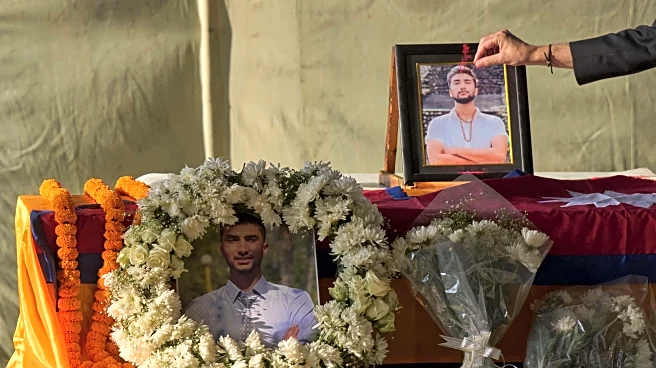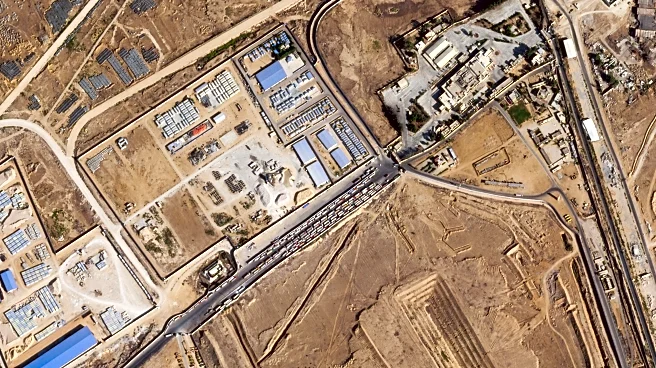What's Happening?
The body of Bipin Joshi, a Nepali student who was held hostage in Gaza, has been repatriated to Nepal. Joshi was among 17 Nepali students studying agriculture in southern Israel when Hamas launched an attack on October 7, 2023. The attack resulted in the deaths
of 10 Nepali students and injuries to six others. Joshi, who was 22 at the time, was kidnapped during the attack. The Israel Defense Force announced on October 14 that Joshi was killed in captivity during the early months of the war. His mother and sister were in the United States lobbying for his release when his death was declared. Nepal's Prime Minister Sushila Karki paid tribute to Joshi at Kathmandu's airport, draping the national flag over his coffin.
Why It's Important?
The repatriation of Bipin Joshi's body highlights the international impact of the conflict in Gaza and the human cost of geopolitical tensions. The incident underscores the vulnerability of foreign nationals in conflict zones and the challenges faced by governments in securing the safety of their citizens abroad. For Nepal, Joshi's death is a poignant reminder of the risks associated with international student exchange programs in volatile regions. The event has also drawn attention to the efforts of the Nepali government to engage with international communities, including the United Nations, in advocating for the safety and release of its citizens held hostage.
What's Next?
The Nepali government may continue to review and possibly revise its policies regarding student exchange programs in conflict-prone areas to ensure better safety measures. Additionally, there could be increased diplomatic efforts to strengthen international cooperation in hostage situations. The incident may prompt discussions on the need for enhanced security protocols for students studying abroad, particularly in regions with ongoing conflicts.
Beyond the Headlines
The tragic death of Bipin Joshi may lead to broader discussions on the ethical responsibilities of educational institutions and governments in ensuring the safety of students participating in international programs. It raises questions about the adequacy of current safety measures and the need for more robust risk assessments before sending students to areas with potential security threats.














